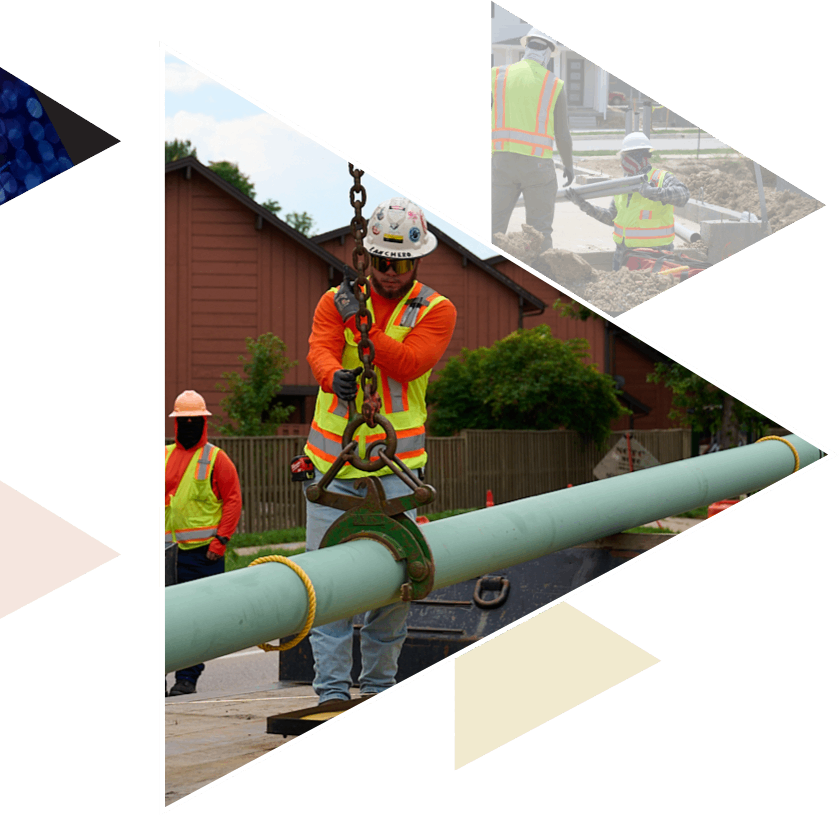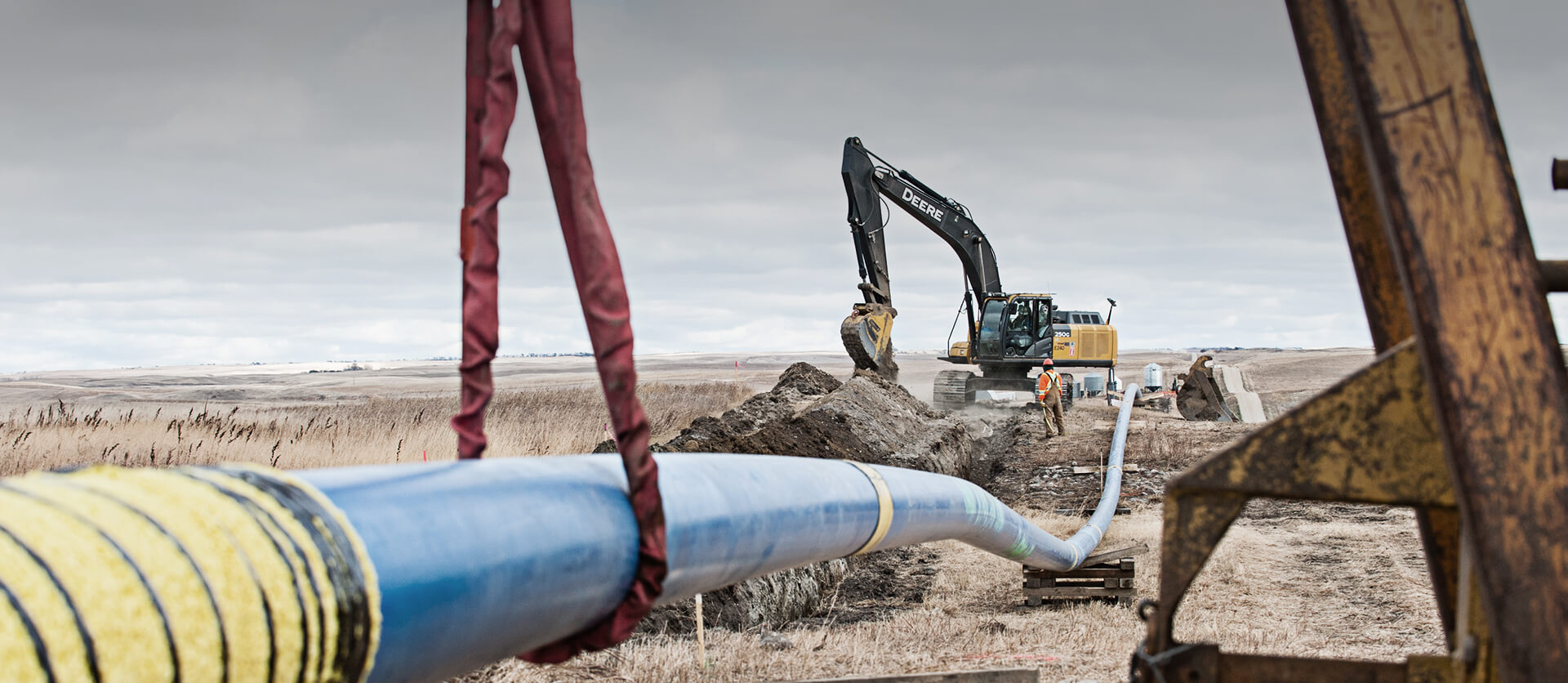Permian Basin Pipeline Construction Can Be Fun For Anyone
Wiki Article
The 10-Minute Rule for Permian Basin Pipeline Construction
Table of Contents4 Simple Techniques For Permian Basin Pipeline ConstructionPermian Basin Pipeline Construction Fundamentals ExplainedUnknown Facts About Permian Basin Pipeline ConstructionOur Permian Basin Pipeline Construction PDFsTop Guidelines Of Permian Basin Pipeline ConstructionNot known Incorrect Statements About Permian Basin Pipeline Construction The Definitive Guide for Permian Basin Pipeline Construction
Cured-in-place pipe (CIPP) is a trenchless innovation made use of to set up water, drain, and various other pipelines without requiring significant excavation or intrusive digging. The procedure starts by placing a liner right into the existing pipework, which is after that full of resin that solidifies to form an irreversible pipeline within the existing pipeline.At MaxLiner USA, we comprehend the advantages of using CIPP, which include its cost, speed, and marginal disturbance during installment. This makes it an ideal option for specialists, plumbing professionals, companies, and districts wanting to minimize downtime while setting up brand-new pipelines. One of the primary advantages of CIPP is its expense savings on labor and tools, leading to a much more cost-efficient solution than conventional pipe substitute approaches.

Instead, a liner is placed into the damaged pipeline and cured in position with warm, creating a smooth repair work that provides lasting defense versus root infiltration, deterioration, opening damage, and other typical issues with existing pipes. Not only does this approach get rid of the demand for substantial excavating, yet it also eliminates the potential dangers related to contaminated materials elimination.
5 Easy Facts About Permian Basin Pipeline Construction Described
Therefore, expenses often tend to be reduced than changing whole sizes of piping through open-cut installations even when factoring in the price of lining products. Due to its low environmental influence and cost savings potential, cured-in-place pipe installation is becoming progressively prominent as an option to conventional repair service job in different industries.When it comes to cured-in-place pipe (CIPP) installment, lots of benefits come from its very little time and cost. Firstly, CIPP installations can be established in a portion of the time it would certainly take for traditional pipeline replacement since no excavation is needed - Permian Basin Pipeline Construction. Instead of digging right into the surrounding dirt and eliminating existing pipelines, CIPP makes use of state-of-the-art trenchless modern technology to install resin liners or polyester fiber tubes inside existing pipelines
The Basic Principles Of Permian Basin Pipeline Construction
This helps to decrease downtime and keep your job on track, resulting in time financial savings that would not have been possible with standard pipeline substitute systems. Whether getting rid of smaller sections of piping or doing total relining tasks, this method has certain advantages when it concerns expense. Not only is tools rental eliminated because no excavation is required, however so are site reconstruction expenses given that a marginal surface repair might be called for after setup.As a result, with marginal time and price required for setup, cured-in-place pipeline setup is an excellent option for cutting down on labor costs without giving up quality work. As we'll review in the adhering to section, this type of setup provides massive benefits when it pertains to decreasing interruption around homes and services.
Fascination About Permian Basin Pipeline Construction
This trenchless installment is a lot easier to execute than standard pipeline laying. As the name suggests, the majority of excavation and associated website preparation is avoided due to the fact that the new pipelines are fed with existing channels. This makes it feasible to install underground pipelines in a portion of the moment required for the much more typical excavating technique, which can develop unnecessary interruption to the environment, regional roadways, pathways, surrounding property owners, and so on.Often, it might take a bit of excavating if these accessibility points are not currently More Info mounted in existing maintenance openings or capture containers. The result should still be less disruptive than excavating lengthy trenches, but something to take into consideration prior to committing to this setup (Permian Basin Pipeline Construction). On the whole, cured-in-place pipe installation is practical when minimal disruption is preferred considering that the majority of the underground infrastructure remains intact while offering renewed stamina and integrity to existing pipes


The cured-in-place setup procedure starts with evaluating the pipe in inquiry to determine whether any kind of damage is existing or requires substitute. Afterward, if needed, cleaning must occur inside the pipe to ensure that all material buildup is eliminated and all surface areas are smooth and uncontaminated prior to lining installation. When these steps are completed, a special resin-coated really felt or hybrid really felt and fiberglass material is placed into the pipeline and evenly distributed along its size.
Not known Factual Statements About Permian Basin Pipeline Construction
Curing (either ambient, warmed water or air, or UV) is presented right into the tube when the lining setup is total, curing and forming the material textile around the old pipe's shape. It needs to be noted that excessive stress needs to be avoided at all costs because it can trigger further damages to the system.This comprehensive section concerning the 'Cured-In-Place Setup Process' has defined its step-by-step treatment. By recognizing what goes right into this process and its troubles, we can appreciate exactly how useful it can be for several piping repair work - Permian Basin Pipeline Construction. Now allow us proceed to explore what sorts of products are utilized in this procedure in our following section
Our Permian Basin Pipeline Construction PDFs
The ideal material can dramatically impact the task, consisting of cost-effectiveness, toughness, efficiency, and performance. Polymer linings are typically preferred for CIPP since they are very durable and resistant to rust and wear and tear. They can additionally last anywhere from 10 to 30 years, depending upon the quality of the products made use of.It is often easier, less turbulent, and extra cost-effective than traditional repair services. Among the main advantages of CIPP pipeline installation compared to the conventional method of removing and changing any type of broken pipe sections with brand-new product is that CIPP pipe does not require digging or excavating the bordering locations.
This lowers the moment and site web labor needed for Check This Out complicated repair tasks. Lastly, CIPP materials are thinner than sections of the new pipeline, so they call for really little room while using remarkable longevity and toughness contrasted to other methods of repairing broken pipelines. While CIPP setup provides some distinct advantages over conventional methods of fixing pipes, it can have certain limitations relying on which type of particular scenario requires it.
Permian Basin Pipeline Construction Can Be Fun For Everyone
Overall, CIPP pipeline installation provides several advantages when it concerns conserving time, money, and effort during pipe repair work jobs. These advantages make it an appealing choice for those seeking quickly yet reputable methods to address broken pipelines at home or in business setups. In the adhering to area, we will review a summary of cured-in-place pipeline installation in better information to provide you an even far better understanding of its lots of benefits.Report this wiki page